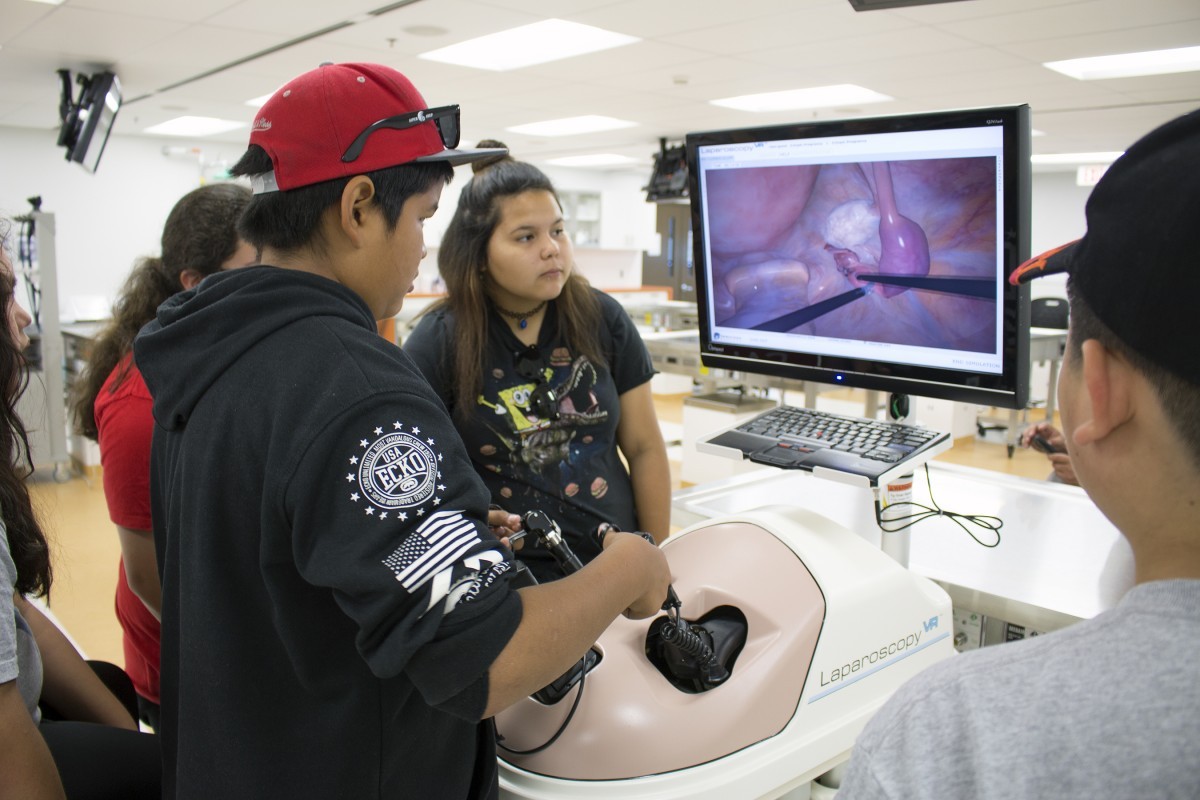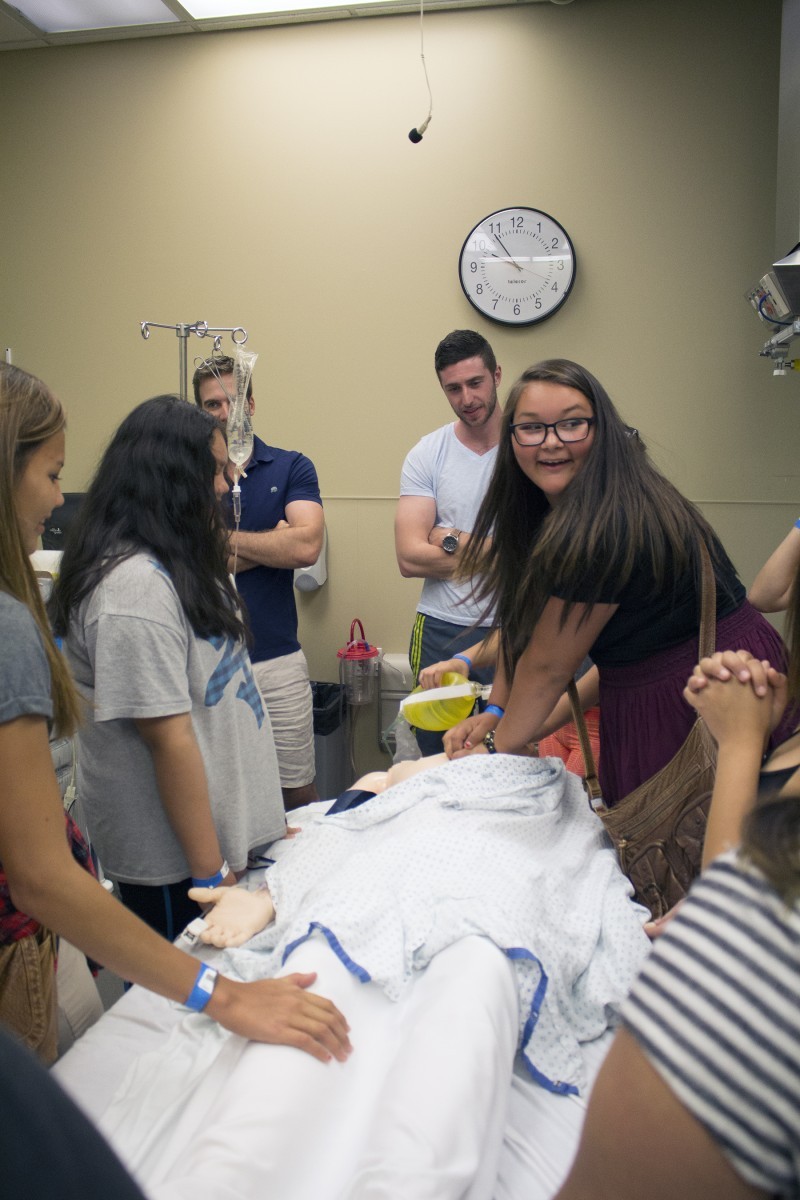
All in a day's work: Students perform simulated surgery to remove gallstones at First Nations National Science Camp
Simulation Centre inspires students at National Science Camp
Just seconds after performing CPR on an interactive manikin and saving its life, Mackenzie Thomas, 15, burst through the operating room doors, radiating with a smile from ear to ear.
“That’s it. I want to be a doctor,” she proudly exclaimed to her peers.
Thomas, along with approximately 50 other First Nations and Inuit students aged 12 to 15, were all doctors for the day as the National Summer Science Camp made its way to Bannatyne Campus Friday, August 14.
The camp, now in its 14th year, hosts students from First Nations and Inuit communities from across Canada, exposing them to post-secondary education and innovative science experiences.
Prior to attending, Thomas says her only exposure to the world of medicine was through watching Grey’s Anatomy. While she admits she has a long way to go before becoming the next Dr. Meredith Grey, she’s happy to have gained hands-on experience and the chance to chat with a few medical students about what it takes to get there.
“Being here with all the equipment and getting to do things makes becoming a doctor a little more realistic now,” says Thomas, who hails from Summerside, P.E.I.

Mackenzie Thomas, 15, performs CPR as guided by college of medicine students in the CLSF during the First Nations National Science Camp.
The students participated in hands-on sessions performing various medical techniques, diagnoses and simulation scenarios at the Clinical Skills Lab and the Clinical Learning and Simulation Facility (CLSF) on campus. The Skills Lab and the CLSF prepare students in the health sciences to deal with real patients and medical emergencies by providing realistic simulation training to strengthen their communication and clinical skills.
The camp is funded by Aboriginal Affairs and Northern Development Canada through its First Nations and Inuit Youth Employment Strategy (FNIYES), which helps youth gain work experience, get career information, develop skills and ultimately find employment. The Manitoba First Nations Education Resource Centre (MFNERC) coordinated this year’s camp in Winnipeg.
Rudy Subedar of MFNERC says he’s seen first-hand the positive impact the camp has had on students who have participated. For instance, he put out an advertisement for two camp assistants this year. Many of the résumés he received were from past camp participants.
“You wouldn’t believe how many of these résumés indicated and that they’re currently in the second or third year of their university science degree. It’s great to see initiatives such as the camp and other efforts pay dividends in their lives and future,” says Subedar.






